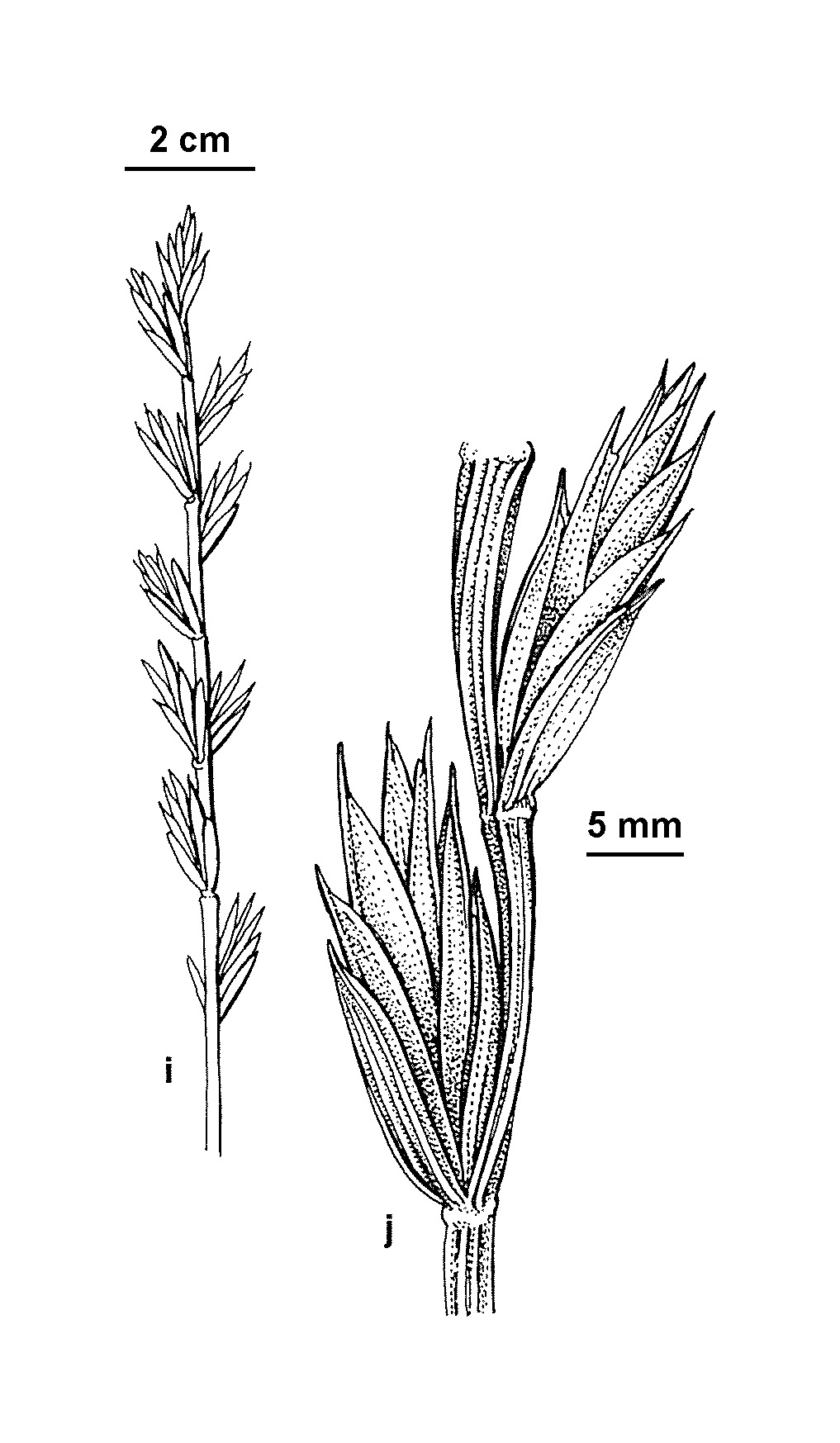Thinopyrum
Rhizomatous or caespitose perennials. Spikes erect or curved; the rachis fragile, disarticulating at the nodes at maturity or remaining intact, glabrous or spinose-ciliate along the acute lateral angles. Spikelets solitary at nodes along the rachis, 2–13-flowered; glumes 4–12-nerved, obtuse to truncate or notched. Callus glabrous.
3 species naturalised in Australia.
The taxonomy of the Triticeae (the tribe to which Thinopyrum belongs) is complicated and there is a wide range of circumscription and acceptance of genera within the tribe. Lophopyrum is sometimes treated as a separate genus, but Barkworth et al. (1983) and subsequent studies (e.g. Soreng et al. 2015) have shown that it is better placed within Thinopyrum.
Walsh, N.G. (1994). Poaceae. In: Walsh, N.G.; Entwisle, T.J., Flora of Victoria Vol. 2, Ferns and Allied Plants, Conifers and Monocotyledons, pp. 356–627. Inkata Press, Melbourne.
 Spinning
SpinningSynonyms
Barkworth, M.E.; Dewey, D.R.; Atkins, R.J. (1983). New generic concepts in the Triticeae of the Intermountain Region: Key and comments. Great Basin Naturalist 43: 561–572.
Soreng, R.; Peterson, P.M.; Romeschenko, K; Davidse, G. et al. (2015). A worldwide phylogenetic classification of the Poaceae (Gramineae). Journal of Sytsematics and Evolution 53(2): 117–137.




